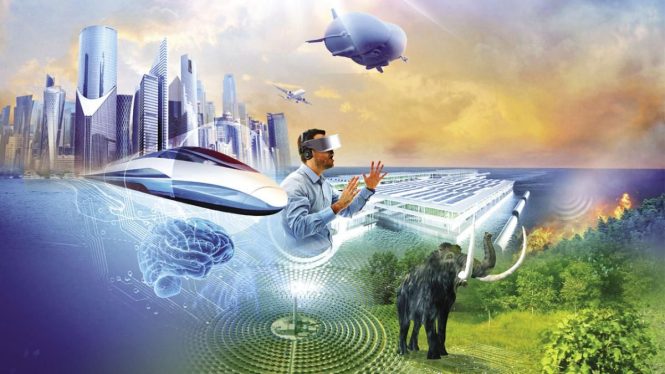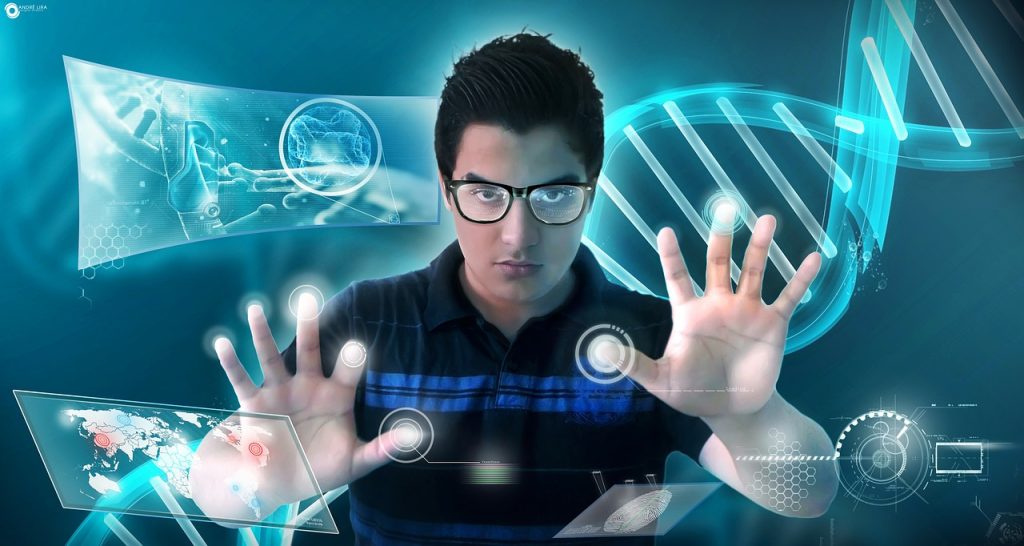

What technologies will be used in the future? This question encapsulates the very essence of our collective curiosity about the trajectory of progress and innovation. We stand at the cusp of a technological revolution, where advancements are being made at an unprecedented pace. This article delves into the exciting and potentially transformative technologies poised to dominate the future. From the pervasive influence of artificial intelligence to the burgeoning field of sustainable technology, this article examines a diverse range of emerging trends that will likely shape how we live, work, and interact with the world around us. We will discuss the potential challenges and benefits associated with each, and provide actionable steps to prepare for the future.
Artificial Intelligence: The Driving Force of Tomorrow
Deep Learning and Neural Networks:
Artificial intelligence (AI) is rapidly evolving from a futuristic concept to a tangible reality. The most significant aspect of AI is deep learning, a subset that employs algorithms inspired by the human brain to learn from vast quantities of data. Neural networks mimic the structure and function of the human brain, enabling computers to recognize patterns, make predictions, and even create new content. Deep learning is being applied in various sectors, like healthcare, finance, and automotive industries. Consider self-driving cars—a prime example where AI algorithms interpret data from cameras and sensors to navigate roads autonomously. This technology, still under development, has the potential to revolutionize transportation by making it safer and more efficient. AI also impacts customer service with chatbots that offer instant assistance, automating tasks previously requiring human intervention.
Applications of AI in Various Sectors:
AI algorithms are proving remarkably effective in tasks such as image recognition, natural language processing, and predictive analysis. For instance, AI-powered image recognition systems are now widely used for medical diagnosis, allowing doctors to identify diseases more quickly and accurately. In finance, AI-driven models can analyze massive datasets to detect fraud and make investment decisions. Furthermore, natural language processing is transforming customer service by enabling chatbots to respond to user inquiries more effectively than ever before.
Sustainable Technology: Building a Greener Future
Renewable Energy Solutions:
The growing demand for sustainable practices is prompting innovation in renewable energy sources like solar, wind, and hydro power. This shift is driven by both environmental concerns and the increasing cost of fossil fuels. Government incentives, reduced manufacturing costs, and improved efficiencies are boosting renewable energy adoption. For example, the use of solar panels is becoming more prevalent in residential and commercial buildings, making homes and businesses more energy independent. Moreover, wind turbines are being constructed in large-scale wind farms across the globe, generating clean energy for millions.
Green Technologies in Transportation and Industry:
Beyond renewable energy, the use of sustainable technologies is extending to various sectors, including transportation and industry. Electric vehicles are rapidly gaining popularity, offering a sustainable alternative to combustion engines. Additionally, companies are exploring methods for reducing waste and emissions throughout their industrial processes, implementing environmentally conscious practices. The advancements in battery technology have been pivotal in boosting the accessibility and affordability of electric vehicles, while simultaneously addressing the sustainability needs of transportation.
Augmented Reality (AR) and Virtual Reality (VR): Immersive Experiences
Enhancing User Interaction and Experiences:
Augmented reality (AR) and virtual reality (VR) technologies are revolutionizing how we interact with the digital world. AR overlays digital information onto the real world, while VR creates entirely simulated environments. AR apps are now available for various purposes—from gaming to education. For example, the educational use of AR overlays makes learning more interactive and engaging.
Potential Applications in Diverse Industries:
VR and AR are also finding applications in various industries, such as healthcare, engineering, and training. Surgeons can use VR to practice complex procedures in a simulated environment before performing them on real patients. Engineers can use VR to test and visualize designs, which could improve efficiency and reduce costs. Companies can use VR and AR for staff training simulations to ensure employees develop vital skills.
The Internet of Things (IoT): Connecting the Physical World
Connecting Devices and Systems:
The Internet of Things (IoT) is transforming the way we interact with our environment and the objects around us. The IoT connects devices and systems, enabling them to communicate and exchange data. Smart homes are a great example of the IoT, as various devices are connected to automate tasks such as lighting, temperature control, and security. These interconnected devices gather data that can be used for various purposes. For example, sensors in smart agriculture monitor soil conditions, optimizing crop yields and resource management.
Impact on Efficiency and Automation:
The impact of IoT on efficiency and automation extends across various sectors. Smart cities use sensors to manage traffic flow, optimize resource allocation, and improve public safety. In the industrial sector, IoT sensors allow for real-time monitoring and control of machinery, leading to reduced downtime and increased productivity. The availability of data enables real-time adjustments to production schedules and maintenance needs.
Biotechnology: Revolutionizing Healthcare and Beyond
Genetic Engineering and Gene Therapy:
Biotechnology is advancing at a rapid pace, with groundbreaking applications in healthcare and beyond. Genetic engineering and gene therapy hold enormous potential for treating previously incurable diseases. Scientists are working on techniques to modify genes in living organisms, opening possibilities for cures and preventative measures. CRISPR, a revolutionary gene editing technology, is transforming scientific research and medical treatments.
Personalized Medicine and Drug Development:
Biotechnology is also enabling advancements in personalized medicine, tailoring treatments to individual genetic makeups. Drugs are being developed and tested based on an individual’s genetic profile, increasing efficacy and reducing side effects. This precision approach is revolutionizing disease treatment and patient care, improving outcomes significantly.
In conclusion, the future of technology is filled with exciting possibilities and challenges. From advancements in AI to the growing importance of sustainability, technology will undoubtedly shape our world in profound ways. Staying informed about these developments is crucial for individuals and businesses to adapt and thrive in the years to come. Embrace the future of what technologies will be used in the future and actively learn new skills to stay ahead of the curve.